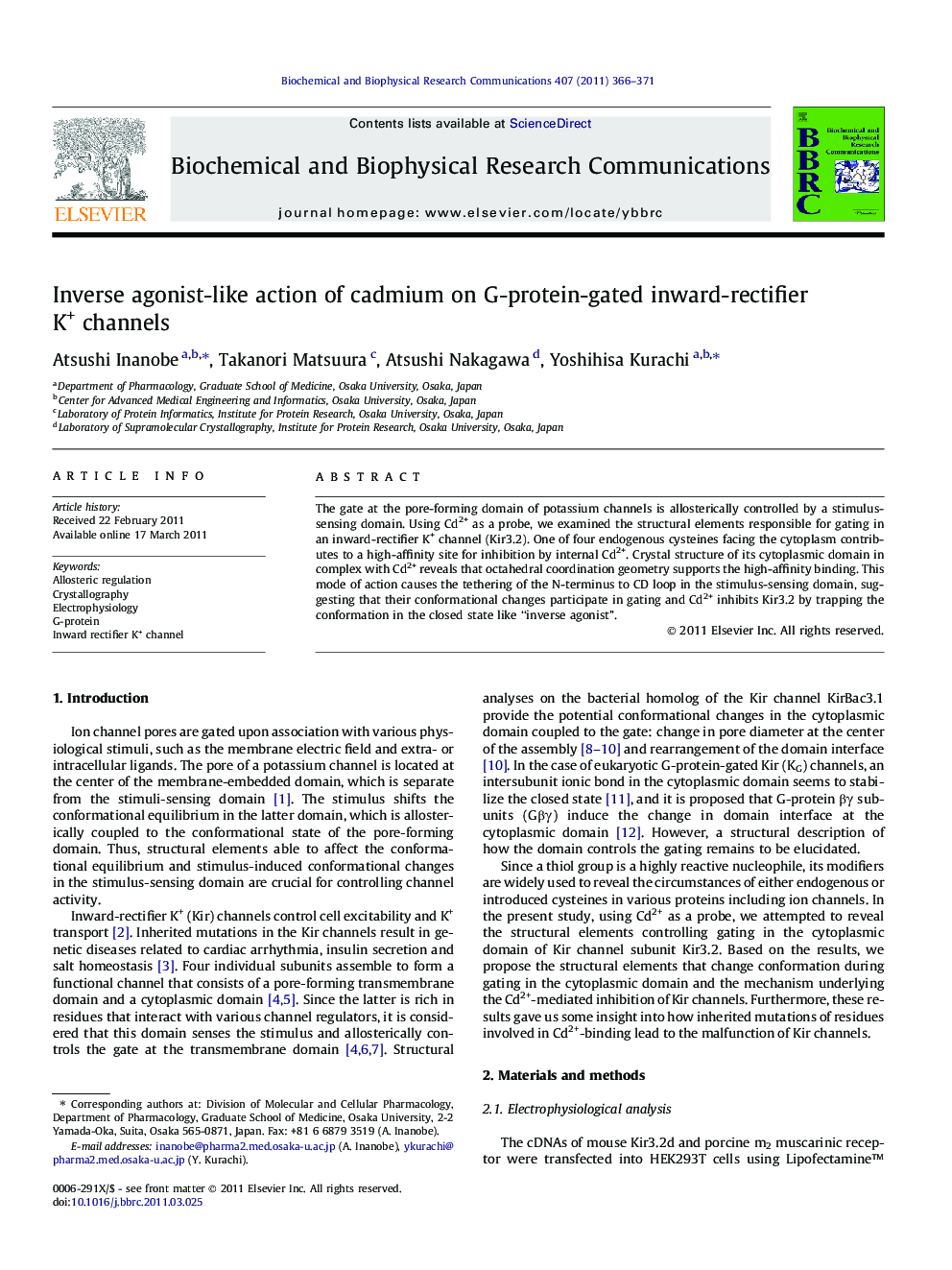| Article ID | Journal | Published Year | Pages | File Type |
|---|---|---|---|---|
| 1930823 | Biochemical and Biophysical Research Communications | 2011 | 6 Pages |
The gate at the pore-forming domain of potassium channels is allosterically controlled by a stimulus-sensing domain. Using Cd2+ as a probe, we examined the structural elements responsible for gating in an inward-rectifier K+ channel (Kir3.2). One of four endogenous cysteines facing the cytoplasm contributes to a high-affinity site for inhibition by internal Cd2+. Crystal structure of its cytoplasmic domain in complex with Cd2+ reveals that octahedral coordination geometry supports the high-affinity binding. This mode of action causes the tethering of the N-terminus to CD loop in the stimulus-sensing domain, suggesting that their conformational changes participate in gating and Cd2+ inhibits Kir3.2 by trapping the conformation in the closed state like “inverse agonist”.
► We examined allosteric control of K+ channel gating. ► We identified a high-affinity site for Cd2+ to inhibit Kir3.2 activity. ► The 6-coordination geometry supports the binding. ► Cd2+ inhibits Kir3.2 by trapping the conformation in the closed state.
